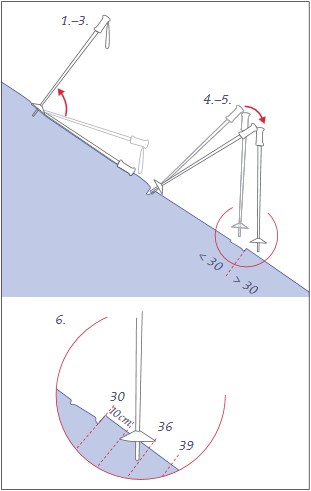This was a great example of what can be done with a little (ok, a lot of) resort knowledge, courtesy of the Snoworks instructors, in somewhat challenging conditions.
The day started early, with the previous days howling winds rattling the resort and the reverberations of early avalanche blasting above the town.
It was clear nothing was going to be open early, so Snoworks took the opportunity to de-camp once again to Cafe Flo for a safety briefing, videos and presentation from Nick (Off Piste Safety instructor for the day).
Mid-morning we got news that a couple of lifts would open from 11:00 so it was time to make a start with the Off Piste group, led by Lee.
Off-Piste Course Morning 1 (with Lee)
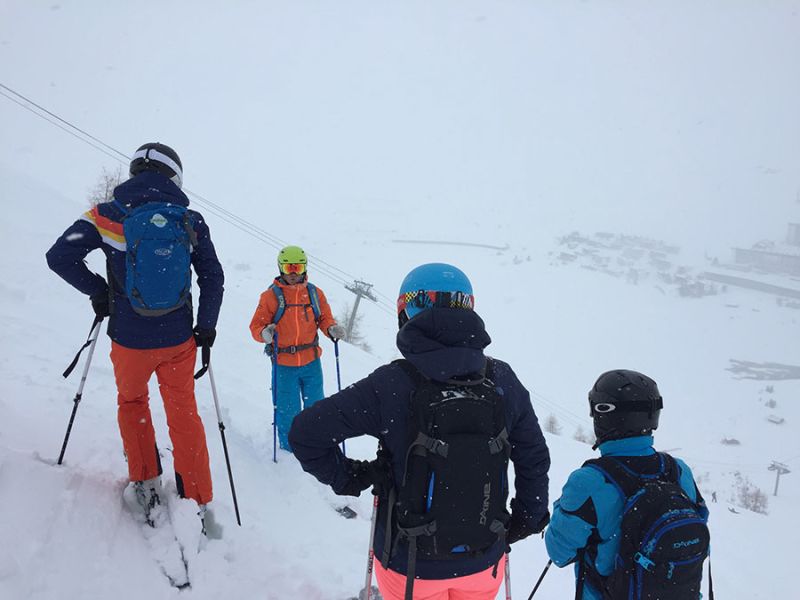
With limited time, this lesson was half length but we still managed several laps of the powdery side-piste accessed from the Paquis chair, and a run down the equally powdery lower section of the Trolles black. Fair to say conditions were pretty hostile with strong winds and horizontal heavy snow.
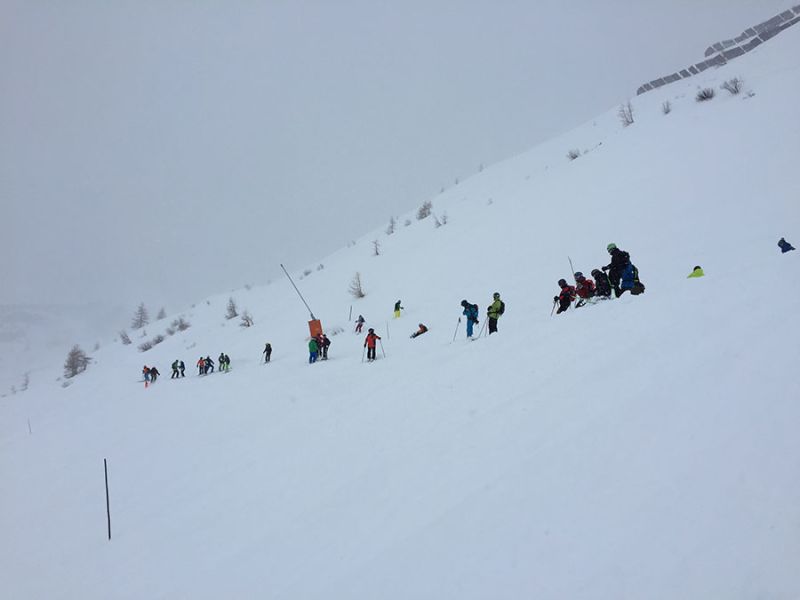
Following a transceiver check, and a short intro we were straight into a race to see who could remove their backpack and assemble shovel and probe quickest. I wasn't slowest but lost 30 seconds or so as my probe got tangled in its carry bag.
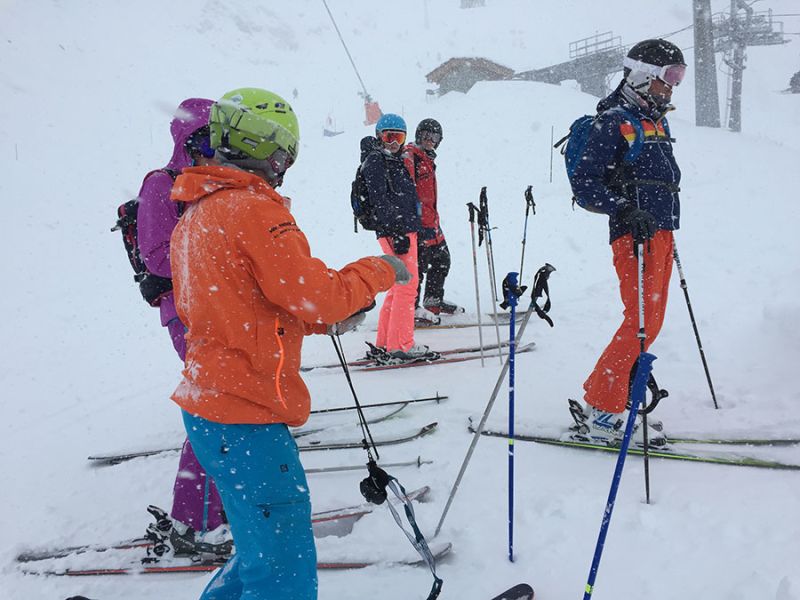
Lesson Learned - leave the carry bag at home, and have the probe easy to access in the pack! 30 seconds doesn't sound much but it gets significant when someone you know is running out of oxygen!
Off-Piste Safety Afternoon 1 (with Nick)
This time we left the top of the Paquis chair in the direction of Val Claret, via the Blue Henri run which was knee-deep in powder. Visibility was measured in yards at times but we navigated round the top of Val Claret and onto the Tichot chair where we proceeded to lap the powder around the Stade area. Although the overall Avalanche Risk Level was 4, our instructors considered these pitches to be relatively safe due to generally low slope angles, pisting and skier passage prior to the snow, and absence of threat from slopes above.
The powder was sublime!
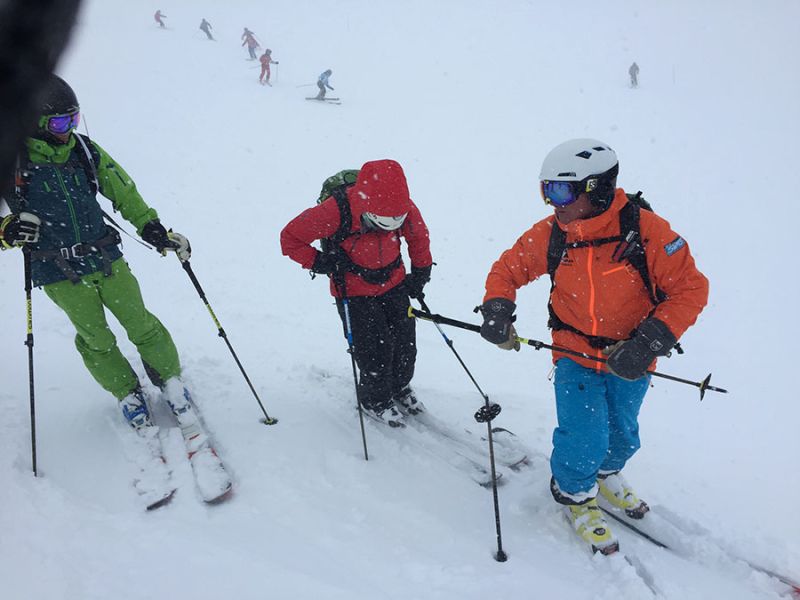
Estimating slope angles in low vis...
In between runs we ran one scenario simulating a double burial and that threw up some interesting lessons, beyond just being great practice in the conditions.
Nick placed 2 transceivers buried on a slope, some meters apart and with location hidden from the group. One of our number "assumed control" and I took the first coarse search, taking the familiar "squared S" pattern across where we'd been told to imagine the slide. I quickly picked up two signals but struggled to get a fix on them, in a howling blizzard with another group of skiers passing through our imagined debris field. As the other skiers cleared, I realised I'd been confused by transceivers they were wearing and the two signals I actually wanted were now back up the slope some way. Ugh.
But that let us pull in the next searcher from the group, and we now at least had rough locations to resume a coarse search around, and quickly found both transceivers (to the instructor's relief, having had an earlier exercise not go quite so well...).
Lesson Learned 1 - if the worst happens, get organised, appoint (or assume) a leader and filter searchers into the are one at a time.
Lesson Learned 2 - ensure everyone in the location is switched to Search, and get other skiers - not involved in the search - to clear off!
We had the chance to look at wind transport in action on yet-to-be-loaded small slopes and then traversed again through the Stade area to a completely un-tracked pitch that was getting on for thigh deep. We went back for more...
Apologies for the lack of pictures of that; my hands were cold and I was enjoying myself too much...
So, a good day - despite atrocious weather conditions and a high overall risk level, we were able to understand informed and conservative route choices (in a fairly limited environment), got some ace skiing in fabulous powder... and learned loads! Loved it. Grins all round.





